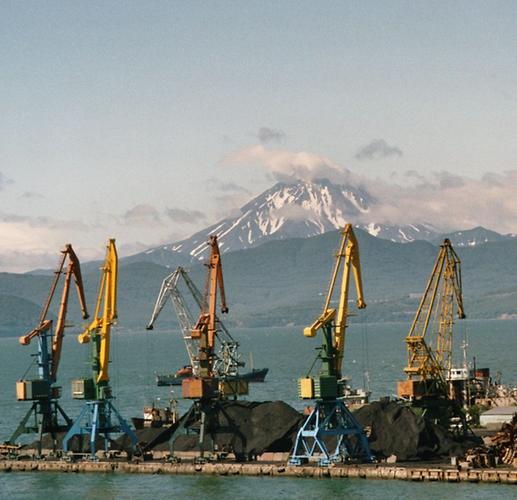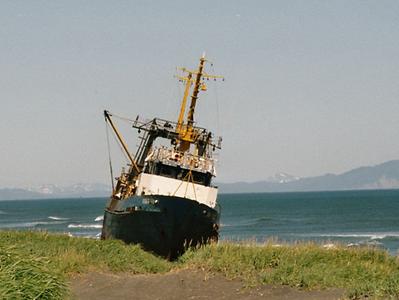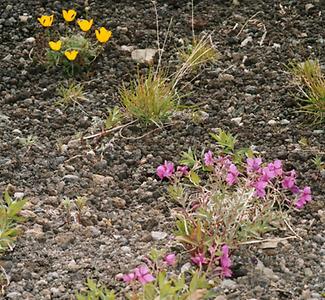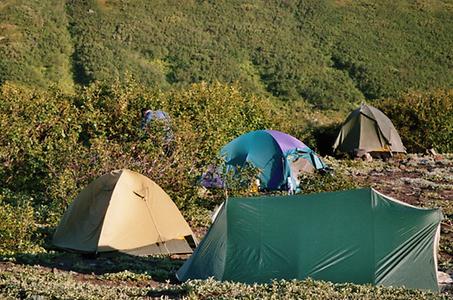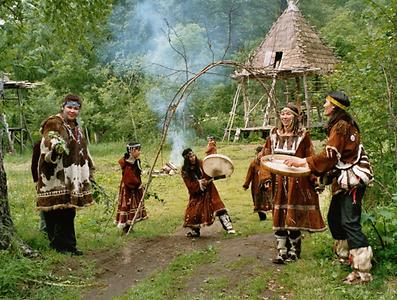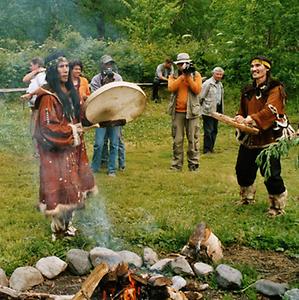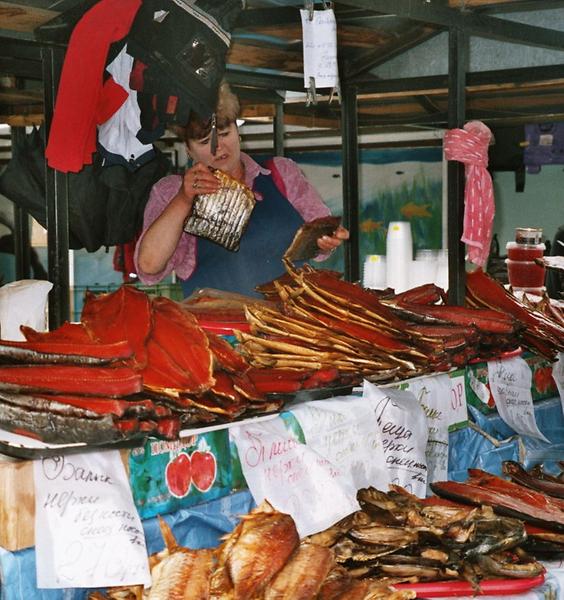Personal report on Southern Kamtschatka (2004)#
by H. Maurer
Note: All pictures were taken by myself or my wife, with two exceptions. The first picture on Avacha Bay (in public domain) is from Pixabay.com that offers many beautiful pictures of Kamtschatka, and the very last picture was sent to us after the trip by a friend from Serbia. All pictures can be used freely, but we appreciate that the source (austria-forum.org or global-geography.org) is mentioned.
Introduction#
In 2004 my wife Ursula and I made a longish trip from Moscom via Kirkutsk and then with the Transsibirian Railroad to Wladiwostock and from there by plane to the capital of Kamtschatka, to Petropavlovsk Petropavlovsk . This is one of the oldest cities situated in the Far East of Russia. Cossacks founded a fort on the coast of Avacha Bay in 1697 for warehousing animal furs — a "natural" tax paid by the peoples in Siberia and Northern regions of Russia. Half a century later on October 17, 1740 the Second Kamchatka Expedition headed by famous sailors Vitus Bering and Alexey Chirikov arrived here. This date is considered as the birthday of the city and it got its name the same day after the two ships on which the expedition had arrived: St. Peter and St. Paul.The excellent general description and panoramas of the the city come from www.airpano.com, an organisation that has helped a lot to make the pictorial and video presentation of much of global-geography.org much more complete and professional.
In what follows I am just describing a few isolated personal experiences, typical for the time, and for the area and volcanoes near Katmschatka. The city and its fascinating wilderness areas further north have developed by now into quite a spectacular destination. You will be able to judge this yourself if you look at some of the many interactive 360° panoramas and interactive videos from www.airpano.com to which we point at the end.
Arriving in Petrapavlosk#
It is some 3 hours by plane from Waldiwostok to the capital of Kamtschatka: with its then 80.000 people (in 2018 close to 200.000) it houses more than half of the population of the peninsula, a peninsula three times larger than all of Austria.Landing in Petrapavlosk is something: A small city on a number of Pacific bays, three major volcanoes (the highest 3500 m, the most prominently visible Avanchynsky 2701 m) directly behind the city, many further volcanoes visible across the bays and from further inland. 400 earthquakes (well, tremors) each year. With a total of then only 660 km of paved roads, the wilderness starts almost immediately. Most of this area is very poor, but there is a colourful (fish) market, providing among other things my favorite king crab legs, salmon, caviar, lobster... and (surprise, not in the guide book I had bought) two very good hotels. Our group visits first some landmarks in the city.
First trip by expedition vehicle#
We then board the vehicle we will be using the next few days. It looks like a dinosaur, an old Russian army truck, and at first we are really surprised that this is what we will be travelling in. Mind you, only in a limited radius around the city and we hear partially on rough terrain.Warm up Hiking #
After some warm-up hikes with food prepared for us in the truck we are aready for the main two days: Setting up camp and ascend a serious mountain.Camping #
The heavy duty large all terrain vehicles takes up into a "base camp", and now we understand, why such a vehicle is necessary. The camp as such is only 850 m up, but already lots of snow (now, end of July!) around it. Our first job is to set up our small two person tents. There are two primtive huts nearby where the cooking is done (and where one can even squeeze to gethere if it rains, or to escape the very strong sun, sicne there are no trees at that “altitude” to give shadow any more. As simple as the cooking facilities are, the food is served on a table with table cloth and is quite tasty. Some wodka is probably helping to further improve it. The toillet facility (singular) is brand new and nice, but where is there water to wash up? This is a real problem: The rivers run very dirty with the snow melting, so we have to do with a few cans (!) of water to keep ourselves clean for three days!
The main mountain #
The big day is up the Avanchysky volcano (2741m, still active). It is some 1800 m up and down again, but actually it is easier than this may sound: The ascent is pretty standard (we had three mountain guides with us), but the descent is a pleasure: you jump into the lava-fields, and with each step you slide down some 3 - 5 meters, thus making the trip down a pleasure. However, we encountered a major problem at the very end: Below our camp and at the end of the mountain-slope a small dirty-brown rivulet had to be crossd with a few steps in the morning. However, during the hot day, the rivulet had turned into a serious major stream with strong currents: No way to cross it easily. Well, of course the guides knew the answer: a bit upstream the gorge was narow enough to allow to use a fallen tree as brigde. But to be honest: crosssing on a tree trunk without anything to hold on was more scary than the actual mountain climb.During the last night it started to rain. Taking down the tents in rain was not much fun, but it was good to then warm up in a dry hut for breakfast again. The biggest surprise for me was, as mentioned earlier, the lack of facilities to wash: I had expected that you would just go down to one of the many creeks and do your washing there, but this was impossible: the sun is so strong that large pockets of remaining snow melt rapidly, making each creek muddy enough to make it unusable. So you have to get by with a few hand-full of water from some cans, not really satisfactory after a day of hiking that has made you sweaty all over. Well, there is a twist to the story: Ursula found a little creek that was surprisingly clean a bit away from the camp, so the second day we decided to take a thorough wash there independent of the fact that the water would be icy. What a surprise: the water was at least 25 degrees centigrade! It must flow over some area with geothermal activity!
Visit to a Koryaks village.#
The final day included a day to a remote Koryaks village, with an introduction to traditional Koryaks life. The Koryaks are culturally similar to the Chukchis of extreme northeast Siberia.
The visit was very interesting, and nature is clearly beautiful: 10 trillion mosquitoes can't be wrong!
A treat#
The hotel we were supposed to stay in the last night was dark and dirty. So our newly-won Serbian friends (last picture) decided to try to book us a room in one of the new nice hotels: Their Russian was convincing enough! Now it was my turn: I went to the (fish) market and got four big lobsters. I convinced the Chef in the hotel to prepare them for us. He was full of laughs, very helpful, threw in potatoes and other stuff, so we had a lovely last evening together.Conclusion#
Maybe what intrigued me most was the fact that with the knowledge of fewer than 100 Russian words I was actually able to communicate with people with whom I had no other language in common, and communicate sometimes concerning quite detailed issues, like politics or the way of life or such. How this worked, I don’t know, but it did, and it established a strong bond with some people, especially in Kamtschatka.
All counted, we liked Kamtschatka very much, and we should have tried to already do so: It is clear that tourism is in full swing to also destroy this area of wilderness fairly quickly. Fortunately, large areas are not open for tourists.
The trip back in a huge Russian aircraft with some 400 passengers, spacious seating, two good meals, was remarkable in as much, as we flew as fast as the sun, due to the high latitude. So we leave at 11 am and arrive in Moscow (total chaos at the airport) after 9 hours, also at 11 am. We celebrate with friends the trip over a very good and expensive dinner in the only restaurant directly facing the Red Square…
You must look at the follwoing URLs with stories leading to panoramas#
- Petropavlosk
- Bears in Kamtschatka
- Death valley
- Sopak volcanao
- Plosky Tolbachcik volcano
- Uzon Caldera-I
- Uzon Caldera-II
- Valley of geysers
...and two interactive movies:








